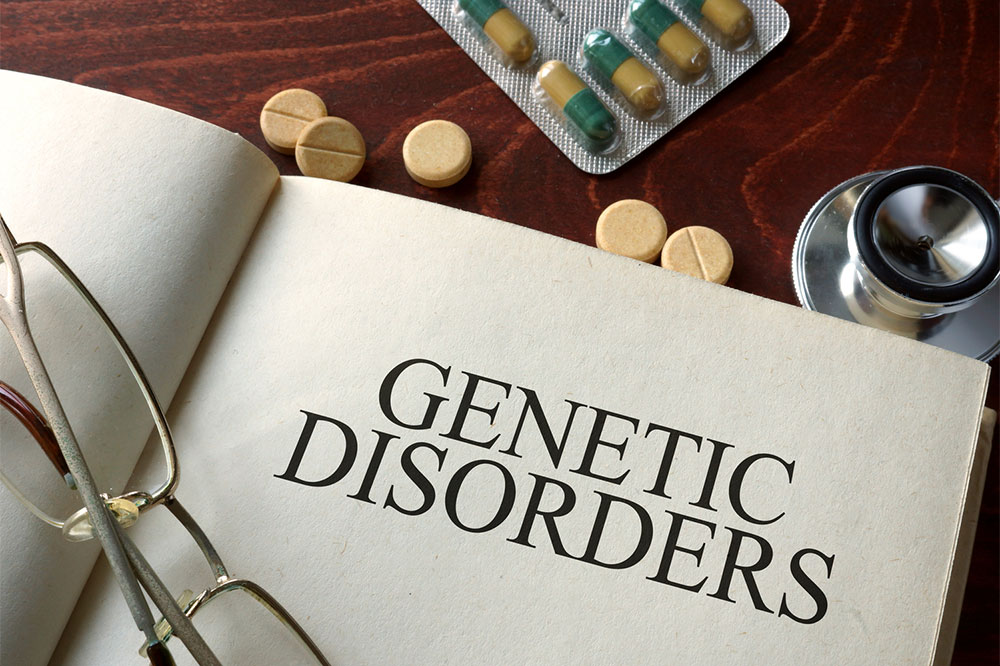5 common genetic disorders to note
Human beings are vulnerable to several diseases and health conditions throughout their life. Although some health conditions can be prevented through various measures, inherited diseases can rarely be cured. These are called genetic disorders. The National Institute of Health has defined a genetic disorder as a disease that occurs due to a change in DNA sequence. In this article, we will discuss some of the most common genetic disorders that affect people.

5 common genetic disorders to note
Autism
Autism is not a single disorder but a collection of developmental disorders. The condition is often identified by impaired social interactions. An autistic person has problems exchanging verbal communication cues and displays repetitive behavior. He/she has severely limited activities and interests. This disorder usually develops around the age of three and varies in symptoms and intensity among individuals.
Autistic children may fail to respond to their names and could avoid eye contact with other people. Many children engage in repetitive movements such as twirling, jumping, rocking, spinning, or display self-abusive behavior such as hand biting or head-banging.
Specialized doctors can detect autism using the Diagnostic and Standard Manual of Mental Disorders (DSM-5). As of now, there is no cure for the condition, but early behavioral therapy can help with understanding social interactions and decreasing self-harm.
Albinism
Our body produces a natural pigment called melanin that gives color to hair, skin, and the eye’s iris. Albinism occurs when genetic defects do not allow our body to produce or distribute melanin pigment. There are several types of albinism, and these are:
Oculocutaneous (eyes and skin) albinism
Affected individuals have white or pink hair, skin, and iris color, along with vision problems. Ocular albinism type 1 affects only the eyes. Although the person’s skin and eye color are usually in the normal range, an eye exam will demonstrate that there is no coloring in the retina.
Hermansky-Pudlak syndrome
It is a form of albinism that can occur with a bleeding disorder or with lung, kidney, and bowel diseases.
Visual symptoms of albinism are an absence of color in hair, skin, or iris of the eye, lighter shaded skin and hair, and patches of skin with little or no color. Additionally, one can also have to deal with crossed eyes, light sensitivity, rapid eye movements, and vision problems. Albinism can be detected using genetic testing, while eye issues can be detected through an electroretinogram.
There is no cure for albinism but treatment aimed at protecting skin and eyes from sun damage could involve the following:
Avoiding the sun, always using sunscreen, and covering up completely with clothing to minimize sunburn risk when exposed to the sun.
Using sunscreen with a high sun protection factor (SPF).
Wearing ultraviolet-protected sunglasses to lessen light sensitivity.
Opting for prescription glasses to correct vision problems and eye position.
Undergoing eye muscle surgery to correct abnormal eye movements.
Breast cancer
Breast cancer can also be listed among common genetic disorders. One in nine American women develops breast cancer in their lifetime. From <10% to around 27% of breast cancers are heritable. Most of the cases are caused by defects in specialized genes called breast cancer genes 1 and 2 (BRCA1 and BRCA2).
Hereditary breast cancer is usually suspected in patients with a strong family history of breast cancer, that is, the occurrence of the disease in at least three first or second-degree relatives (sisters, mothers, aunts). DNA tests are performed to determine whether a suspected individual has a genetic mutation in the BRCA1 or BRCA2 genes. Treatment approaches for breast cancer include surgeries, immunotherapies, radiation therapies, hormonal therapies, etc.
Cystic fibrosis
This is one of the most common genetic disorders in the country, with about 30,000 people diagnosed with it. In this condition, the body produces thick and sticky mucus that can clog the lungs, leading to infection. Additionally, the mucus can block the pancreas, which stops digestive enzymes from reaching the intestine, thereby impairing digestion.
Genetic mutations in the Cystic Fibrosis Transmembrane Regulator (CFTR) gene leads to CF. The CFTR protein allows cells to release chloride and other ions, but in patients with CF, this protein becomes inefficient. Gene therapy has proven to be a life-saving treatment for the condition since it aims to eradicate its cause.
Sickle cell anemia
Among genetic disorders, sickle cell disease is one of the country’s most common inherited blood disorders. It is caused by a mutation in the hemoglobin-beta gene. The hemoglobin protein helps transport oxygen from the lungs to other body parts.
The red blood cells with normal hemoglobin are smoother and rounder in appearance and easily glide through blood vessels to get the job done. In SCD, abnormal hemoglobin molecules get stuck to one another to form long, rod-like structures. Their movement is restricted and thus, can lead to blockages. These diseased cells are destroyed rapidly, thereby leading to anemia.
Since sickle cells block the blood flow through vessels, it increases the risk of lung tissue damage, which causes acute chest syndrome, acute pain, stroke, and painful, prolonged erection. It also damages metabolic organs such as the spleen, kidneys, and liver. The damage to the spleen makes patients easily susceptible to bacterial infections.
When both parents have this genetic defect, there is a 25% probability that the child will be born with SCD. Treatments include prescription options, pain management, and blood transfusions.


